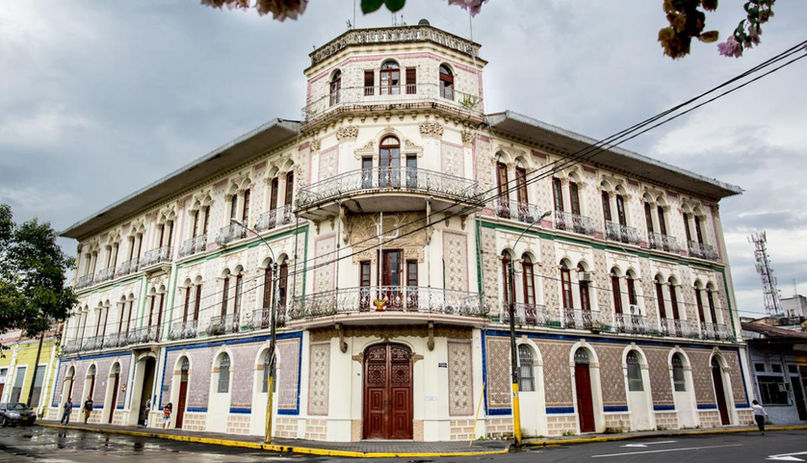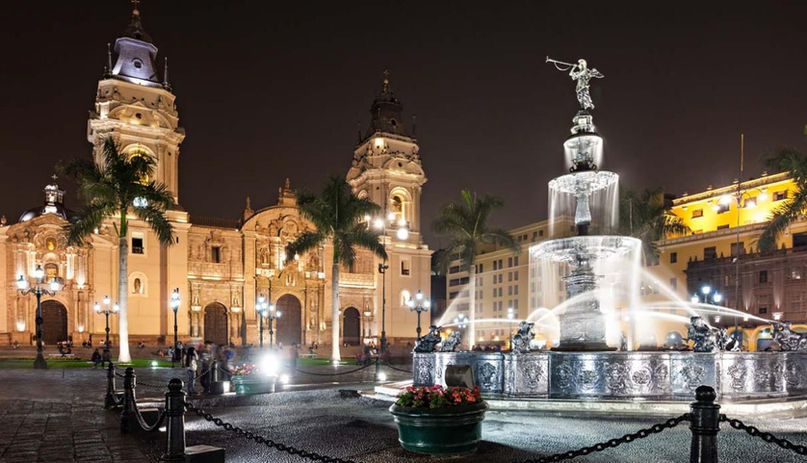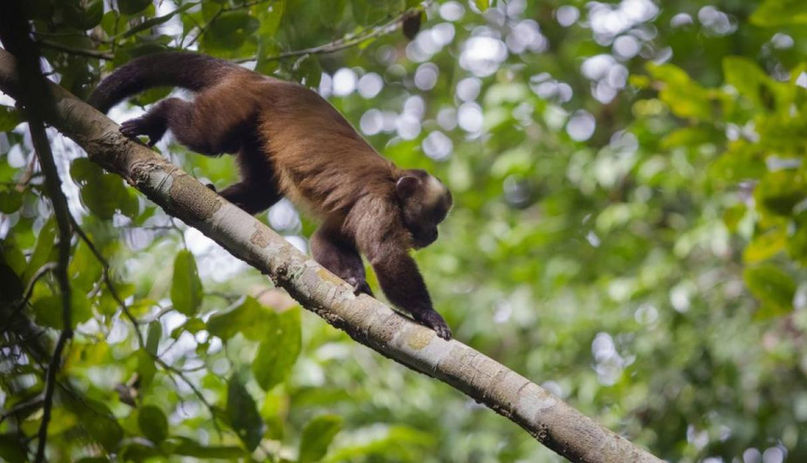AREQUIPA
Located in the southern area of Peru, Arequipa (also known as the White City) indulge visitors with its impressive architecture, warm people and great food.
Arequipa has many attractions to offer in town and out of the city where two of the deepest canyons of the world are located: The Cotahuasi canyon and Colca canyon.
The last one is the most popular due to the infrastructure that supports tourism is well developed.
Must visits:
-
Historic city center (Cathedral, Santa Catalina Convent).
-
Andean Sanctuary Museums (home of Juanita mummy).
-
The farms and Sabandía.
-
Colca canyon and its towns: Yanque and Chivay, including Cruz del Condor (where it is possible to observe Condors flying over the mountains).
-
Arequipa's greatest "picanterias" (clocal restaurants we the best dishes of the Peruvian Cuisine can indulge the most demanding tastes. Arequipa is also known a the Gastronomical Capital of Peru.
CHICLAYO & TRUJILLO
Chiclayo and Trujillo, are located in northem Peru. These are two historical destinations with important pre-Inca archaeological sites.
In 1986, the city of Chan-Chan (Trujillo) constructed entirely of adobe with ornaments representing the divinities of the sea.
In 1987 the Tomb of the Lord of Sipan, an old Mochica emperor from the III Century was discovered in Chiclayo. This finding was comparable to the discovery of Tutankhamun’s tomb due to the quality and quantity of ornaments found: jewelry, tunics and textiles.
In 2006 another discovery astonishes the world: the tomb of the Lady of Cao, a young woman governor in times of the Mochica culture.
Must visits:
-
Cathedral of Trujillo
-
Royal Tombs Museum (home of Lord of Sipan), Chiclayo
-
Huaca del Cao and its museum (home of Lady of Cao), located in the Chicama Valley
-
Huaca Esmeralda and Huaca del Dragon (also knows as Huaca Arco Iris), Trujillo.
-
Chan-chan pre-hispanic citadel, Trujillo.
-
Tucume pyramids, Trujillo.
CUSCO
Incan walls, colorful costumes, sacred valleys, impressive architecture, palaces built on top of Inca temples, legendary trails, traditions, native art, are some of the attractions that Cusco hides within the city.
Also impressive archaeological remains that catch the eyes of the visitor for their architecture and perfect harmony with the scenery, like Machu Picchu, the ancient city where only the nobility was aloud, after a pilgrimage of several days to prepare the body and soul.
The southern valley of Cusco is also a great area to visit pre-inca sites, mestizo towns with colonial baroque churches.
Must visits:
-
Churches: Cathedral, Santo Domingo, San Blas, La Merced, etc.
-
Museums: Inca Museum, Casa Concha (houses the Machu Picchu collection recently returned by Yale University), Archbishop Palace, MAP (Pre-Columbian Art Museum)
-
Archaeological sites: Sacsayhuaman, Qenqo, Pucapucara, Tambomachay, Koricancha(temple dedicated to the sun)
-
Barrio de San Blas (Artisans’ quarter)
-
Sacred Valley: Chinchero, Pisaq (market and site), Maras, Moray, Ollantaytambo y Machu Picchu
-
South Valley: Tipon, Pikillacta, Andahuaylillas.
ICA: Paracas & Nazca
Located at 280kms south of Lima, Ica is an oasis in the middle of the desert.
Ica was the scenery of the Paracas culture, famous for its finest textiles and mummification techniques. The Regional Museum of Ica is an excellent choice for all travelers, as well as to take a short flight to over view the Palpa and Nazca Lines, which enigmatic drawings that still keep a hidden message from our ancestors.
An hour away, in the Pacific Ocean, the Ballestas islands offer a great opportunity to observe sea lions in their natural environment, thousands of birds, impressive rock formations; this area is also home of the Humbolt penguin.
Must visits:
-
Ballestas islands and Paracas Natural Reserve
-
Nazca lines
-
Cantalloc aqueducts
-
Regional Museum of Ica
-
Chanchilla cementery
-
Huacachina lagoon and the dunes (ideal for adventure sports like: sandboard and buggie rides)
IQUITOS
One of the top destinations for naturalists would be Iquitos, located in the heart of the Amazon and of the shores of the Amazon river.
In the last 15 years, Iquitos has developed unique travel experiences.
Either staying in one of its lodges or taking one of its cruise ships, visitors should expect an adventure to last a life-time.
Iquitos city center has several monuments considered cultural patrimony: The cathedral, the Iron House, the Old Palace Hotel, the Cohen House, the Morey House and more than 70 buildings.
Its lodges are accessible by boat and most of them include activities all full board. From any of its ports, cruise ships depart allowing visitors to explore the Amazon by taking visits to native villages, national reserves like Pacaya Samiria, and take short treks for bird watching, swimming with pink dolphins and photo shutting.
Must visits:
-
Iquitos city center: Cathedral, Iron House, Old Palace Hotel.
-
Amazon river.
-
Ethnographic museum.
-
Pacaya Samiria National Reserve
LIMA
Located in the coast of Peru (at sea level), is the main entrance to the country as it’s the capital of Peru.
Since its Spanish foundation, almost 500 years ago, Lima has been synonymous of a fascinating cultural “mestizaje” reflected in its gastronomy and architecture.
In 1991 Lima was declared BY UNESCO as Cultural Heritage of the Humanity.
As a cosmopolitan city, Lima has many things to offer to visitors: museums, art galleries, archaeological sites and restaurants to taste the Peruvian Gastronomy.
Must visits:
-
Lima historic center: (The Cathedral, San Francisco church and its catacombs, Santo Domingo church, La Merced church, San Pedro church).
-
Museums: Larco Herrera, Archaeological museum, Lima Art museum, Gold museum and Amano museum (dedicated to ancient textiles).
-
Archaeological sites: Huaca Pucllana (200 to 700 AC), Huaca Huallamarca (500 to 1,400 AC) and Pachacamac (200 to 1,532 AC)
MANU NATIONAL PARK
The Manu Biosphere Reserve, recognized by UNESCO since 1973, hosts the Manu National Park, with two areas: the Reserved Zone of the Manu destined for tourism and the Bajo Manu is where communities live in the forest.
Known as the “most pristine jungle of the amazon basin”, the Manu National Park is an extension of 15,328Km2 located on the east slope of the Andes mountains. The Biosphere Reserve includes an additional 2,570km2 and a further 914km2 are considered a “cultural area”.
The Manu National Park was conserved thanks to its inaccessibility. Even nowadays it is still difficult to access due to its geographical location.
It can be reached by road from Cusco, by air (travelling on small aircrafts and landing in Boca Manu) or by river (up streams the Tambopata river).
The park include several ecological zones and keeps an extraordinary biodiversity: 15,000 species of plants, 250 varieties of trees, over 1,000 species of birds. It is also admired for keeping one of the highest abundances of land vertebrates ever found in Latin American tropical forests. Besides, human habitation is reserved to native communities.
TAMBOPATA
Puerto Maldonado, the capital city of Madre de Dios region, is a small and modest city in the southern jungle that serves as a port or a passage for the thousands of travelers who arrive to that destination to embark on a major adventure: discover its biodiversity, in the various lodges located on the shores of the Tambopata and Alto Madre de Dios rivers.
From the Madre de Dios port, motorized boats that take travelers to the Tambopata Nature Reserve leave for different lodges. On the way, visitors can see animals on the banks of the river, such as ronsocos, lizards, monkeys and many birds, encouraging visitors to start their adventure in the middle of the virgin jungle.
Must visits:
-
Lake Sandoval, Cocococha and Cayman Lagoon
-
The Monkey island.
-
Collpas Chuncho and Colorado
-
For visitors who enjoy the adventure, 01 or 02 nights camping is available in specific areas monitored by the jungle authorities.
PUNO
Only few cities are located in the shores of a lake, just like Puno on the shores of Lake Titicaca, with and extension of 8,560km2 (the highest navigable lake in the world), at 12,556 feet above sea level.
The oral tradition tells that Manco Capac and Mama Ocllo emerged from Lake Titicaca with the mission to found the Inca Empire. So they did after a long trip which took them to the Cusco valley.
Puno was also the cradle of one of the biggest pre-Inca civilizations: Tiahuanaco. So, Puno offers a rich fusion of Spanish and native styles, reflected in its colonial balconies, textiles, pre-Inca sites and handicrafts.
Lake Titicaca is home of Los Uros community, inhabitants of the floating islands of Los Uros whose “modus vivendi” and traditions are considered Intangible Heritage of the Humanity.
Must sees:
-
The cathedral
-
Los Uros floating islands
-
Taquile and Amantani islands.
-
Sillustani archaeological site
-
Luquina community, in Chucuito, specialized in home stays


















































































